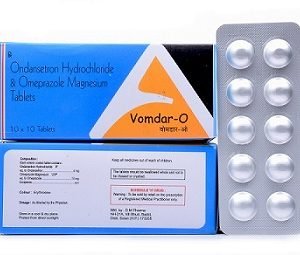Description
Generic Name
Obeticholic acid
Brand Name
Obeliver 10
Company Name
Arlak Biotech
Dosage Form
Tablet
Strength
10 mg
Obeticholic Acid Tablet (OCA) is a synthetically modified bile acid and potent agonist of the farnesoid X nuclear receptor (FXR) that is used to treat liver diseases including primary biliary cholangitis. Obeticholic acid tablets have been shown to improve serum enzymes in several diseases including nonalcoholic steatohepatitis (NASH) and primary biliary cholangitis.
Taking precautions with the dose of Obeticholic Acid Tablet is important. Take the medicine in a limited quantity. Avoid the use of medicine that can be reactive with the aid. Do not use alcohol. You may suffer some side effects like abdominal pain, drowsiness, vomiting, headache etc. Contact the doctor if you feel anything.
Indications:
Indicated in primary biliary cholangitis (PBC; a type of liver disease that destroys bile ducts, which allows bile to stay in the liver and cause damage)
Pharmacology of Obeticholic Acid Tablet
Farnesoid X Receptor Agonists
Miscellaneous GI agents
Mechanism of Action
Primary biliary cirrhosis is an autoimmune process by which the bile ducts and liver are damaged progressively, leading to fibrosis and cirrhosis. Bile acids increase the risk of damage and fibrosis to the damaged bile ducts. Obeticholic acid is a potent agonist of the farnesoid X receptor, which serves to regulate the hepatic metabolism of bile and cholesterol. This drug acts by binding to the farnesoid X receptor (FXR), found in the nucleus of liver and intestinal cells, which in turn increases liver bile flow, suppressing its production and decreasing hepatocyte exposure to excess levels of bile with cholestasis. Cholestasis is a process that normally causes inflammation and cirrhosis of the liver.
Pharmacodynamics of Obeticholic Acid Tablet
The activation of the farnesoid X receptor FXR by Obeticholic Acid Tablet acts to reduce the synthesis of bile acids, inflammation, and the resulting hepatic fibrosis.
Contraindications:
- Contraindicated in complete biliary obstruction, Decompensated cirrhosis, or a prior decompensation event.
- Compensated cirrhosis with evidence of portal hypertension.
Absorption
Obeticholic acid is absorbed in the gastrointestinal tract. Obeticholic acid occurs at approximately 1.5 hours after an oral dose and ranges from 28.8-53.7 ng/mL at doses of 5-10mg. The median Tmax for both the conjugates of Obeticholic acid is about 10 hours. One product monograph reports a Tmax of 4.5h for both 5 and 10mg doses. The AUC ranged from 236.6-568.1 ng/h/mL with 5mg to 10 mg doses.
Volume of distribution
The volume of distribution of obeticholic acid is 618 L.
Protein binding
Obeticholic acid and its metabolic conjugates are >99% plasma protein-bound.
Working Mechanism of Obeticholic Acid Tablet
The metabolism of Obeticholic acid occurs in the liver. Obeticholic acid is conjugated with glycine or taurine, followed by secretion into bile. The conjugates are then absorbed in the small intestine and then re-enter the liver via enterohepatic circulation. The intestinal microbiota in the ileum converts conjugated Obeticholic acid into a deconjugated form that may be either reabsorbed or eliminated. Glycine conjugates account for 13.8% of the metabolites and taurine conjugates account for 12.3%. Another metabolite, 3-glucuronide, may also be formed but displays little pharmacological activity.
Route of elimination: About 87% of an orally administered dose is accounted for in the feces. Less than 3% of the dose can be recovered in the urine.
Half-life: The biological half-life of Obeticholic acid is reported to be 24 hours.
Adverse Effects of Obeticholic Acid Tablet
Get emergency medical advice if you have signs of an allergic reaction: hives; difficulty breathing; swelling of your face, lips, tongue, or throat.
Call your physician at once if you have:
- Loss of appetite
- Vomiting
- Diarrhea
- Weight loss
- Urinating less often, dark urine
Note- The Obeticholic Acid Tablet is only for external use.
Storage- Keep the Obeticholic Acid Tablet in a cool and dry place.













